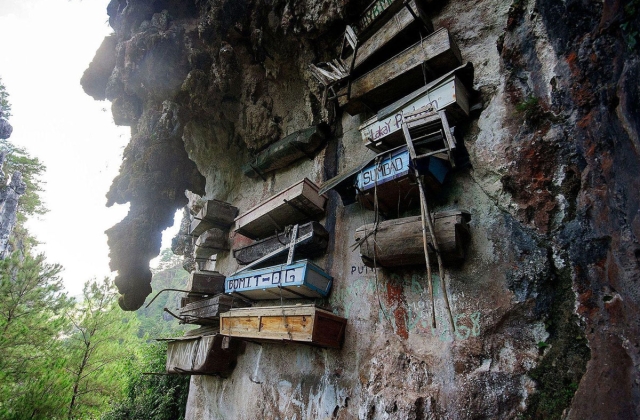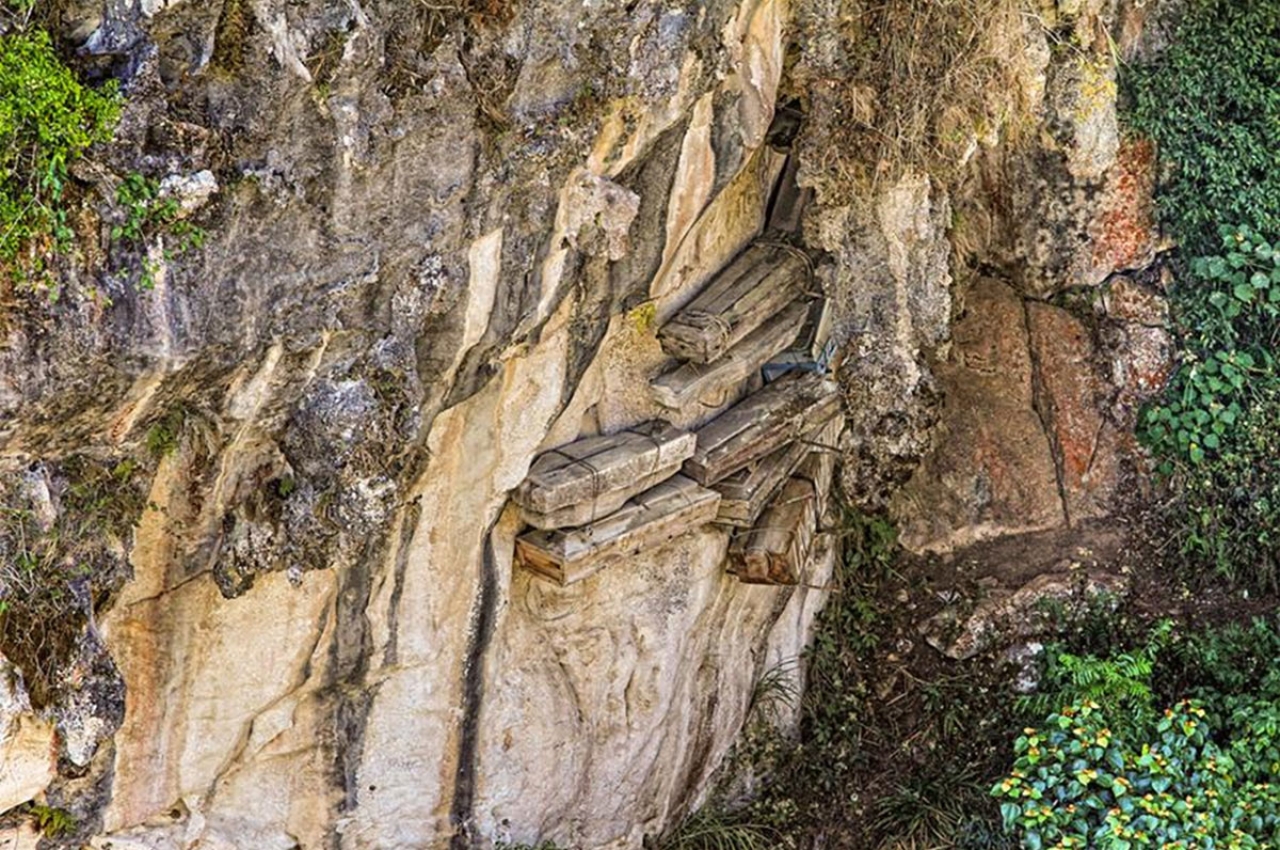Serene, eerie and fascinating, the hanging coffins of Sagada are a unique Philippine tour destination. Hung from cliffs, these vibrantly colored caskets offer visitors a peek into over 200 years of history and local tradition.
This tradition stems from the indigenous Kankanaey of Sagada who believe that raising the coffins help bring the treasured deceased closer to heaven. After a member of one's family passes away, the Kankanaey would hoist the coffin up the hill and fasten it to the side of the mountain. Afterwards, they would then place the deceased family member in the foetal position wrapped in cloth inside of it.
Throughout this process, if any family members or helpers were to get a drop of blood on him or her, it was considered good luck and to bring good fortune.
Today, the rituals are still practiced by the Kankanaey but many have made modern concessions to update these traditions. Additionally, many Kankanaey have incorporated Christianity in their worship but many still do traditional pagan and animist rituals during big events and life changing moments; especially during the time of death.
The ceremonies are predominantly performed by a village elder male called a Pangamaen or an elder woman called a Panginaen; however a male elder is preferred. In the event of a death, during the time of the wake, the whole family should be present and during the sacrifice, the whole village is welcome to partake in giving their last respects.
 photo by Andrew Haimerl (via Creative Commons)
photo by Andrew Haimerl (via Creative Commons)
For the offering, a male pig is usually the first slain of many additional pigs and/or roosters depending on the amount of family and community members present during the vigil and wake.
After the butchering, a town elder is summoned to read the omen of the gall bladder. If the gall bladder is full and protruding, this is a good omen and the opposite, an almost empty gall bladder is considered a bad omen. If a bad omen is read, the Elder will butcher either another male pig or alternatively a male rooster.
The animal must be male as it is believed that males bring the bad omen away. Conversely, if a good omen is read, a female animal will be butchered as women are considered keepers. So, in this case, Kankanaey butcher female animals after reading a good omen to make sure the good luck stays.
On the burial day, three additional pigs are butchered. The trinity consists of a male, a female mother and a normal sized pig of either sex. The butchering takes place after sunrise and again oftentimes more animals will be sacrificed depending on the amount of people present. The elder will then say prayers and offer the butchered male pig to the spirit of the recently deceased so that he or she has an animal to ride towards heaven. During the burial, the widower must not be present.
After the burial, the family is considered to be in mourning for a year and may not participate in large festive gatherings during this time. Black clothing must also be worn throughout this period. Once the time has lapsed, other animal sacrifices takes place to mark the end of the mourning period.
The Kankanaey bring a wealth of tradition and culture to Sagada in the Philippines and it is this very reason why it remains a tourist hotspot after all of this time. Visitors of the Sagada hanging coffins should remember that they are visiting a sacred place and should show decorum and respect at all times. If you would like a tour of the hanging coffins and other heritage sites of the Philippines, Uncharted Philippines has the perfect package waiting for you.

 photo by Jungarcia888 (via Creative Commons)
photo by Jungarcia888 (via Creative Commons)